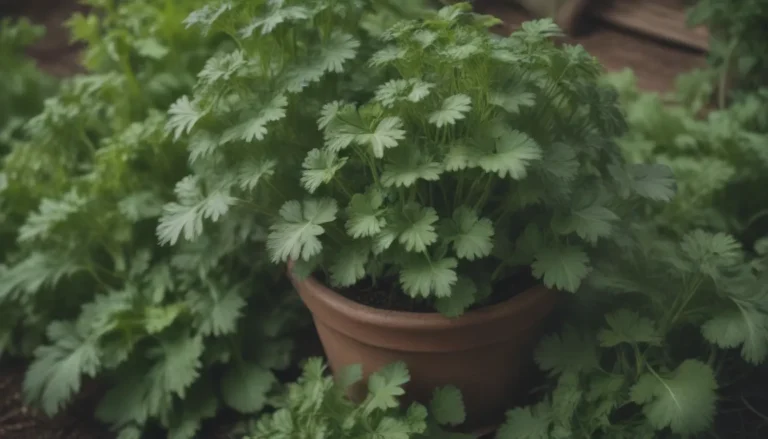A Comprehensive Guide to Growing and Caring for English Walnut Trees

Are you considering adding an elegant and useful English walnut tree to your garden or orchard? Look no further for a complete guide on how to care for and cultivate these majestic trees. Despite its name, the English walnut tree, scientifically known as Juglans regia, actually originates from central Asia, and it boasts both beauty and functionality. In this detailed article, we will explore the key steps to grow and maintain a thriving English walnut tree – from soil and water requirements to pruning techniques and common pests to watch out for.
English Walnut Care Essentials
Let’s start by diving into the essential care requirements for nurturing a healthy English walnut tree. Follow these guidelines to ensure your tree thrives and produces bountiful walnuts for years to come.
Light
Give your English walnut tree plenty of sunshine to flourish. This tree thrives in full sun and benefits from at least six hours of direct sunlight daily. Insufficient light can result in reduced growth and nut production, so choose a location with ample sunlight for optimal results.
Soil
English walnut trees have extensive root systems that require deep, fertile soil to support their growth. Ensure your tree is planted in soil rich in organic matter that drains well. Aim for a pH range of 6.0 to 6.5 to create a favorable environment for your walnut tree.
Water
Proper watering is crucial, especially during the early stages of your tree’s growth. Water your newly planted English walnut tree weekly throughout the spring and summer of its first two growing seasons using a soaker hose to avoid wetting the foliage. Provide two to three gallons of water per inch of trunk diameter at chest height. Once established, transition to a biweekly watering schedule to maintain healthy growth.
Temperature and Humidity
English walnut trees thrive in cooler climates and are best suited for USDA zones 3-7. Avoid hot and humid weather conditions, as these can negatively impact the tree’s health and productivity.
Fertilizer
Boost your tree’s growth with a springtime fertilizer application. Opt for a slow-release, high-nitrogen fertilizer with ammonium sulfate to promote vigorous growth during the growing season. Follow the product label instructions for the correct dosage to keep your English walnut tree thriving.
Types of English Walnut Trees
English walnut trees come in various cultivars, each selected for unique traits that enhance their productivity. From frost hardiness to nut production, these cultivars are tailored to meet specific needs in crop production. Some popular cultivars include:
- Juglans regia ‘Caspian’
- Juglans regia ‘Chaldoran’
- Juglans regia ‘Alvand’
- Juglans regia ‘Chandler’
Explore different cultivars to find the one that best suits your gardening goals and climate conditions.
Pruning for Optimal Growth
Annual pruning is essential for maintaining a strong structure and promoting healthy growth in your English walnut tree. Trim during the winter months to establish a single leader and a rounded crown structure with well-spaced lateral branches. Remove weak, dead, or damaged branches to encourage robust growth and ample nut production. When your tree grows too large for DIY pruning, enlist a licensed arborist for professional assistance.
Propagation Methods
While growing English walnuts from seeds is possible, purchasing a young tree is the quickest way to start producing a harvest. If you prefer the seed propagation method, follow these five steps to grow a walnut tree from seed:
- Collect fresh walnuts with intact shells.
- Soak the walnuts in water for 24 hours.
- Plant the soaked walnuts in a pot with rich, well-draining soil.
- Keep the soil consistently moist and place the pot in a sunny location.
- Transplant the seedling to a larger container or the ground once it reaches a suitable size.
Experiment with propagation methods to find the approach that works best for your gardening preferences.
Dealing with Pests and Diseases
Protect your English walnut tree from common pests and diseases to ensure its longevity and productivity. The walnut husk fly is a notable pest that can impact walnut quality. To combat this pest, use landscape fabric under the tree canopy to prevent larvae from entering the soil, and remove fallen nuts promptly. Additionally, consider using sprays labeled for walnut husk fly control as needed.
Thousand cankers disease is a serious threat to English walnut trees, caused by a fungus spread by the walnut twig beetle. Monitor your tree for symptoms such as yellowing foliage, branch dieback, and wilting leaves, as infected trees may perish within a few years. Consult with a professional arborist for effective disease management strategies to safeguard your English walnut tree.
Interesting Facts about English Walnut Trees
- The scientific name for the English walnut tree is Juglans regia.
- English walnut trees prefer cooler climates and thrive in USDA zones 3-7.
- The English walnut tree was first imported by English merchants from Iran.
- Dwarf cultivars of English walnut trees, like Juglans regia ‘Europa’, reach a maximum height of around six feet.
By following these care tips and guidelines, you can cultivate a flourishing English walnut tree in your garden or orchard. Stay attuned to your tree’s needs and address any issues promptly to ensure its long-term health and productivity. Remember, the English walnut tree is a versatile and rewarding addition to any landscape, offering beauty, shade, and delicious nuts for enjoyment. Happy gardening!




